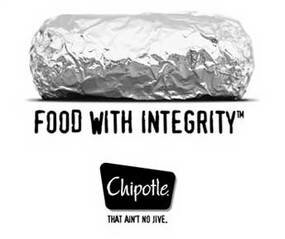 Do-gooder burrito-makers Chipotle Mexican Grill have been holding Farmer Appreciation Days for three years now. On the day in question, Chipotle feeds farmers and market volunteers free, piping-hot burritos as a way of saying thanks for the effort.
Do-gooder burrito-makers Chipotle Mexican Grill have been holding Farmer Appreciation Days for three years now. On the day in question, Chipotle feeds farmers and market volunteers free, piping-hot burritos as a way of saying thanks for the effort.
But knowing you have to bring enough to share, they're also giving the first 100 market customers canvas shopping bags and "burrito bucks" (which will get you a free entrée at Chipotle).
This Saturday, October 16, they're celebrating Farmer Appreciation Day at the U-District Farmers Market. Starting at noon, the first 100 people to visit their green tent (SE entrance, across the street from Jack in the Box) get the bags and bucks.
But wait, there's more!...
Eat bacon. Tape bacon to your cat. Wear a bacon hat to work. Whatever gets a conversation started is okay by Jonathan Safran Foer, author of Eating Animals, as long as we all sit around and talk about bacon. Maybe later we'll hold hands and sing Kumbayah.
Despite the title of his latest book, Foer is no firebrand. Foer's intent, repeated several times, is to widen the conversation in America about industrial animal agriculture, i.e. factory farming, CAFO's, slaughterhouses, et cetera.
He doesn't want to alienate anyone, or put them on the defensive. At Town Hall, last night, he was so restrained and moderate that I would have been shocked that he was the author, if I hadn't already seen his appearances on The Colbert Report and Ellen. As it happened, the only shocking thing about Foer's talk was the lack of passion evinced from the podium.
The result was a bland and forgettable chat about a topic that should be infuriating and revolution-inspiring. My more carnivorous friends and peers (who uniformly turned down invitations, because they "liked eating animals" [Ed.: I actually said that to Constance!]) could have attended, and still felt completely comfortable going out for a beer and a burger afterward. Ironically, during his introductory remarks, Jonathan Safran Foer told the audience that before he started touring, he feared people showing up to throw ground beef at him. That hasn't happened, but I sort of wish it had. Maybe such a confrontation would have radicalized Foer's delivery....
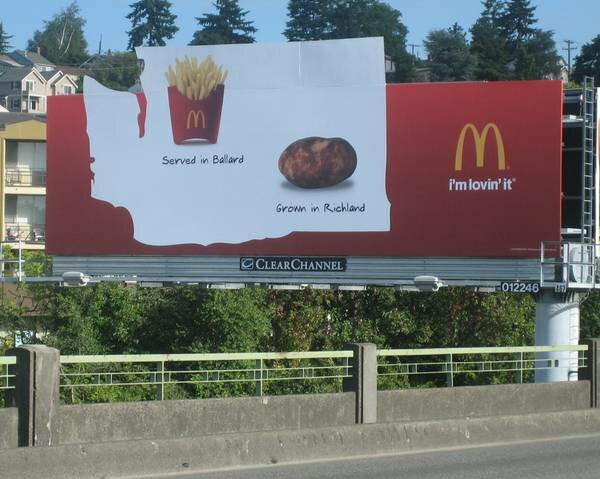 Photo courtesy of Gilman Park blog.
Photo courtesy of Gilman Park blog.
Coincidentally, I happen to be reading Mark Bittman's screed against agribusiness, junk food, and fast food, Food Matters, just as McDonald's "localwashing" ad campaign splashes across Seattle billboards. Gilman Park blog apparently broke the story on July 18, and it is now spreading across the internet. See Grist.com, Change.org, Fast Company, and Web Design Cool for various takes on the fast food giant's blatant and insulting attempt to hitch a ride on the locavore wagon.
The irony of the campaign is that a marketplace such as Seattle, with strong farmers markets, restaurants committed to sourcing locally, and an educated, informed populace, is not likely to respond well. That doesn't really matter. McDonald's has a marketing budget of over a billion dollars, the bulk of which (over $800 million, as of 2006) is spent on U.S. media. That's about 16 percent of gross sales, paid for with every Big Mac, fries, and shake. Test marketing an ad campaign that will be about as successful as their pizza trial a few years ago is just a part of the equation.
What will be significant is the how much media attention the campaign gets, whether the campaign becomes a "teaching moment" for consumers in other markets, and whether other communities heed the warning: Localwashing appears to be the next frontier for advertising. It's certainly easier and cheaper than actually sourcing and using local, sustainable, and organic ingredients. Very, very low hanging fruit for McDonald's, in fact, since the company is the single largest purchaser of beef, pork, potatoes, and apples in the U.S....
David Swidler is eating, drinking, and cooking his way through all 32 World Cup countries, much like he does at his site cookingvssports.com.
What if there was a place that was just like your home with nicer weather and the people were more fun? Now before you scream out, "It's called the Bay Area," we love those "bridge crossers"--however, they tend to bring up the subject of social justice pretty fast, and then you're on the next BART to Snoresmont.
British people have two countries that fit that description, Australia and New Zealand. Because of this, a lot of the cuisine Down Under is similar to what one finds in England: flavorless meat in flavorless gravy.
Except that New Zealand lamb is the tastiest in the world, which makes sense because the country is like 80 percent sheep, with the other 20 percent consisting of people, plants, mountains, water, hobbits, and air. When I visit my English grandmother, she makes Yorkshire puddings with New Zealand lamb, and I am in dingo heaven....
David Swidler is eating, drinking, and cooking his way through all 32 World Cup countries, much like he does at his site cookingvssports.com.
How is it possible that the people of Washington and Mississippi belong to the same country, yet the citizens of Denmark and Holland do not?
Of their many similarities, both of these countries have a globe-covering mass-produced beer. Denmark gave the world Carlsberg, and Holland put Heineken in our lives, who in turn gave us the driving dog.
In fact, as far as I can tell, the only difference between Denmark, Holland, and the Netherlands is that Holland has been playing an exciting style of soccer since the days of Jen Van Der Vlasman, and the Danish like to publish children's books about suicidal mermaids.
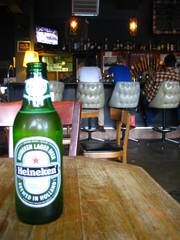 Heineken was the first imported beer to enter the U.S. after prohibition ended and continues to be our number-one import. (Molson, you have no excuse.) Carlsberg has been brewed in Denmark since the mid-1850s, and some of its past logos include an elephant and a swastika. Can you guess which one was dropped in the 1930s?
Heineken was the first imported beer to enter the U.S. after prohibition ended and continues to be our number-one import. (Molson, you have no excuse.) Carlsberg has been brewed in Denmark since the mid-1850s, and some of its past logos include an elephant and a swastika. Can you guess which one was dropped in the 1930s?
Now as Three Sheets Denmark taught us, both countries have tasty microbrews, however, you try and find a Mirror Pond Pale Ale in Viborg or Haarlemmermeer.
For some reason, a six-pack of Carlsberg, which tastes like our mass-produced Budweiser Miller Coors, costs eleven bucks at both Bottleworks on 45th and at the QFC next door. Do the Danes make us pay their socialist taxes, or are they still mad about The Prince and Me? I ended up buying a pint at Murphy's down the street, where they don't serve Dutch beer (racists). So I had to find some other bar that would serve us a Heineken, which took about seven seconds.
Heineken and Carlsberg: from small, white person-filled, coastal, non-threatening regions come global beer empires. Ah, that is why the microbeer boom started in the Northwest and not down Dixie way.
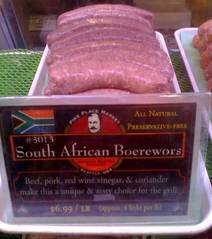 David Swidler is eating, drinking, and cooking his way through all 32 World Cup countries, much like he does at his site cookingvssports.com.
David Swidler is eating, drinking, and cooking his way through all 32 World Cup countries, much like he does at his site cookingvssports.com.
The last two days were historic for South Africa and their meaning and impact should not be taken lightly. Many claimed it could never happen, but after years of struggling and overcoming long odds, South Africa is finally able to stand tall and say to the rest of the world, "We have an actor that is playing Murdock in an A-Team movie."
At this special time I am proud to point out that Seattle has a lot in common with South Africa! For example it’s currently winter in both places and over there, like at our Pike Place Market, it's easy to find their national sausage, boerewors.
Boerewors is an Afrikaner word meaning "farmer sausage," which is what I call the creepy guy who works at our local petting zoo. (Thank you).
I went to Uli’s Famous Sausage and thought about asking if their boerewors meet the official standards. However, it being June, they were busy with several tourists asking about the Sleepless in Seattle houseboat. So, I just assume that their mix of minced beef, pork, red wine vinegar, and coriander is pretty close to what Desmond Tutu tosses on his grill.
The boerewors itself is very dry and crumbly. Could that be because much like South African farmers would do, Uli’s hung them out to dry in the hot sun--or was it simply because the cows and/or pigs used had come down with World Cup fever, causing their insides to break apart? Much like the application of the offside rule, it will remain a mystery.
South Africa, we salute you, your borewors, and all of your future attempts at '80s TV-to-film adaptations.
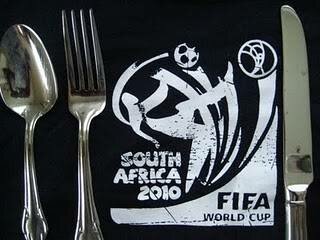 Every four years, the people of earth set aside their religious, territorial, and cultural differences and funnel all of their hate through soccer.
Every four years, the people of earth set aside their religious, territorial, and cultural differences and funnel all of their hate through soccer.
In honor of this year’s World Cup, I will eat, drink, or make a meal inspired by each country in the the entire 33 team field…What’s that?…Belgium is out? They just packed up and left? Well fine, who needs them anyway. Now, where was I, oh yes, I will eat, drink, or make a meal inspired by each country in the entire 32 team field by the final game on July 11.
Easy you think? Well because only one Scandinavian and three Asian teams qualified I’m at a serious hometown disadvantage. If anyone knows of a good Slovakian restaurant or Slovenian recipe, please let me know.
Now, if you’re asking yourself, what does this guy knows about international cuisine, I confess not that much. However, may I ask you what you know about doing your job? Yeah, that’s what I thought. We’re in the same boat you and I, so I won’t tell anyone if you don’t.
We’ll be starting on Friday with World Cup host South Africa, and their delicious KFC Popcorn Chicken.
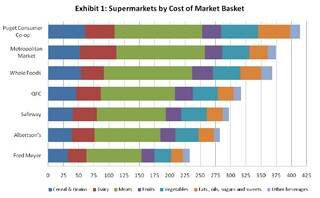 Courtesy University of Washington Center for Public Health Nutrition, "The Supermarket Gap"
Courtesy University of Washington Center for Public Health Nutrition, "The Supermarket Gap"
MSNBC has repackaged the results of the Seattle Obesity Study--by the University of Washington's Adam Drewnowski, who studies relationships between social class and obesity--to make it sound a little sexier, but in a way that also obscures the study's findings.
MSNBC's headline is "Pricey grocery stores attract skinniest shoppers," and the story contains a sidebar that lists grocery stores by customer obesity (a BMI of over 30): just 4 percent of Whole Foods customers are obese, followed by Met Market (8), PCC (12), QFC (17), Fred Meyer (22), Safeway (24), and Albertsons (38).
This is actually the opposite of what study wants to show you, which is that poverty drives the food choices that result in weight gain, not the stores you shop at.
The UW release says simply: "Obesity remains an economic issue." (And there's no photo of a slender blonde loading groceries into her SUV, there's bar graphs.) The study itself is titled, "The Supermarket Gap," and follows up on earlier research that found that "people who lived near supermarkets consumed more fresh produce and were less likely to be obese." Fine, everyone thought, we'll just build more supermarkets in so-called "food deserts" (places served only by convenience stores or fast food)....

Proletariat Pizza - Half Cinco, Half Margharita
They say the pizza in New York City is so good because of the quality of the municipal water used to make the pizza dough. Well, if that is true, then White Center must have some of the best water in the state. I say this because Proletariat Pizza is some of the best I have ever had in my life. Though to be fair, I should point out that I have never been to New York. But based on online reviews, I'm not alone in thinking this way. The pizzas are consistently delicious. I have been back five times now, and not once did I finish eating and think, "It was better last time."
The pizzas are all 18-inch thin crust pies. You can order a 1/2-size of any pizza if a full one is too much. As far as toppings go, you can build your own with most of the traditional fare along with some surprising extras, like Mama Lil's peppers and Spam. However, the signature pies are all pretty good too. Personally I have tried The Favorite (Italian sausage, fresh chopped garlic, Mama Lil's peppers), The Real Hawaiian (pineapple and Spam), Margherita (basil, fresh tomato and fresh mozzarella), and the Cinco. The Cinco is my hands-down favorite, consisting of fontina, provolone, asiago, gorgonzola, and mozzarella cheeses. The full menu can be found on their website....
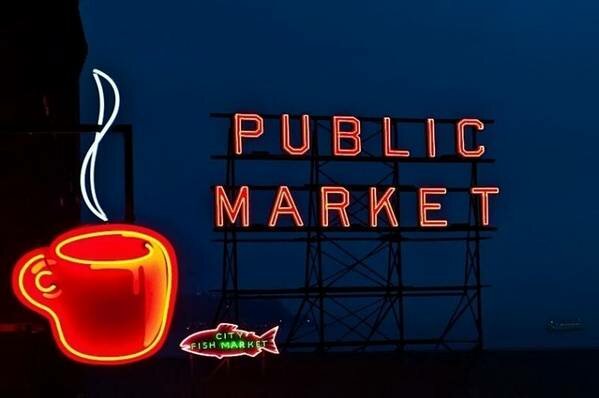 "Oh -- Seattle" by Paul Swortz from The SunBreak Flickr pool.
"Oh -- Seattle" by Paul Swortz from The SunBreak Flickr pool.
Okay, Seattle, this is it: You have roughly 60 hours in which to complete your shopping before Christmas is all over you. We know there's someone you haven't figured out what to get yet, and there's surely someone who's slipped off your list that you're going to remember Wednesday at 8 p.m. and freak out. So The SunBreak--with the help of some knowledgeable friends--is here to help: this is our desperate, last-minute gift guide of the more or less local variety. Support local businesses and take all that pesky thinking out of holiday shopping!
A Cinematic Gift That Keeps on Giving Plenty of films are made in the Great Northwest these days, and plenty of them suck. The easiest way to become familiar with what's worthwhile and what's best forgotten in terms of local (and non-local) cinema is by becoming a member of the Northwest Film Forum. NWFF is a member driven collective that does more than pretty much anyone else to support film in the Northwest, as well as bringing the best independent films to town. Membership starts at $40 a person (or $70 for a couple), and gets you great discounts to shows, as well as lets you help support the cinematic arts in the region. (Jeremy M. Barker)
Just Plain Nuts Holmquist Hazelnuts are absolutely delicious hazelnuts grown in Lynden, Washington. Available at the Pike Place Market and several Farmers' Markets. (Rachael Coyle)
Mariners Merch After a few years in the wilderness of mediocrity (or worse), the Mariners are looking like contenders again. Hit Safeway or a Mariners Team Store for Mariner gift cards your M's fan friend can buy tickets and gear with; or go balls out and put a deposit down on a 16-game plan. (Seth Kolloen)
Chocolates Falling in the delicious territory between completely useless and entirely practical (you do need calories, even if they're near-empty), chocolate makes a good gift for just about everyone on your list. An obvious and elegant choice is the Obama-endorsed Fran's, where the gray and smoked salt caramels is a classic minimalist delight. At this point, their website looks overloaded; so last minute purchases will need to be made in person. For the more ecologically conscious sweet tooth, look no further than Theo the country's only organic, fair trade, bean-to-bar chocolate factory. They have single origin bars, inspired artistic truffles, chipotle sipping chocolate, and even a vegan option or two. Order online or sample the goods in their Fremont factory. (Josh C. Bis)
Rock Musics I'd happily recommend any of my favorite albums of 2009: Curse Your Branches by David Bazan (questions about the reason for the season); Listen to the Thunder by The Maldives (best paired with The Moondoggies Don't Be A Stranger and a bottle of whiskey); and a personal favorite, one of the most underrated local albums of 2009: Space Between The Maps by The Ironclads (for fans of complex character-driven pop songs). (Abbey Simmons, SoundontheSound.com)...
Michael Specter's book Denialism (de rigueur subtitle-of-absurd-length: How irrational thinking hinders scientific progress, harms the planet, and threatens our lives) might look like it'd fit nicely on the bookshelf with Why People Believe Weird Things and Unscientific America, but it would likely jump the other two and scuff up their dust jackets. Specter has been writing for the New Yorker since 1998, and some of the Big Apple's pugnacity seems to have rubbed off on him. Or maybe he was always that way.
It's a curious book because while you might expect Holocaust (or other genocide) deniers, 9/11 conspiracy theorists, creationists, global warming skeptics, or other troublesome bands of misinformers to pop up, they don't. "I decided to focus on issues like food, vaccinations, and our politically correct approach to medicine," writes Specter in the introduction, "because in each of these arenas irrational thought and frank denialism have taken firm root."
Yet as Grist argues in a critique of the book, if a small group of global warming deniers delays action long enough that we reach a point of no return for the planet, that's a big deal. If a small group of people insist on paying more for Whole Foods organic produce because it makes them feel healthier, that's...part of their shopping budget. Yet, Grist notes, "The book’s index has no entry for 'climate change.' The entry for 'Global warming' cites just one page—a reference to genetically modified foods as a “solution” to global warming."
I can't speak for Specter, but his approach feels Freakonomics-y or Gladwellian: one of those "forget everything you thought you knew" come-ons, juiced up with the blood of a few hodgepodge sacred cows. In his introduction, Specter's language is fairly circumspect and even-keeled. But the chapters on the "irrational" response to Vioxx, hysteria around vaccines, the rise of the organic food fetish and natural supplement worship, and the role of genetics in medical treatment, contain what some call "provocative" and others might call "unsubstantiated" claims.
Even when I agreed with him, Specter managed to rub me the wrong way. Though he struggles to sound filled with empathy for the irrationalists, Specter comes off as an old-school anthropologist tolerant of a tribe's quaint superstitions. Of course it's natural for you to believe that god threw the lightning at you, he seems to say. (I kept wondering who he was writing for--I'll get the chance to ask him when he's town.)
Again and again, Specter presents what sounds like both sides of an argument, except that one's irrational, anti-science, and threatening all our lives. Specter takes the lesson of the Vioxx scandal to be primarily one of emotional overreaction. We don't understand pharmacological medicine, so we trust and fear it in equally overreaching amounts. If we rationally accepted its risks, Vioxx might be on the market today.
What he doesn't spend a lot of time considering is whether the overreaction is called for given the scope of our reliance on this medicine. That is, we can't really afford to have pharmaceutical companies lying to us about known problems with medicine prescribed to millions--it would set a troubling precedent.
There's an argument to make for Vioxx, and Specter makes it persuasively. But he also tells a story of practiced deceit, political pressure, and retributive firing and ends his chapter saying: "Most people don't walk out the door trying to hurt other people." No, they don't. But most people don't run pharmaceutical companies. That pool is tiny. And a few bad apples could potentially poison the apple cart. So we hold them to higher standards....
It's tech day on The SunBreak, I guess. I've been wanting to write about Locavore, the Seattle-grown iPhone app, for some time, and their recent update announcement just gave me a reason to. (Full disclosure: I have been at parties at the same time as Buster Benson.)
Locavore responds to the notion that eating locally grown food is not just better for your green self-esteem, it's better for local farmers, the environment, and food quality. Plenty of people value locally grown food over an organically grown label, although you often aren't called upon to make that choice around Seattle. (Of course, there are trade-offs.)
The $2.99 app identifies your location in the U.S. and then tells you what's in season where you live. (It also tells you what's coming into season, and what's going out.) It also gives you a list of local farmer's markets and farms, with a description of what the market is like, and tells you how to get there. If you're into the whole social media thing, you can also announce your local eating...
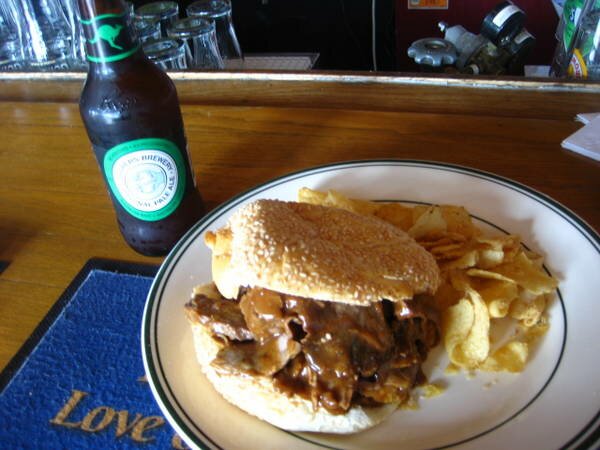
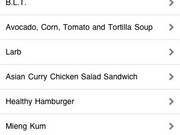

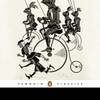


Most Recent Comments